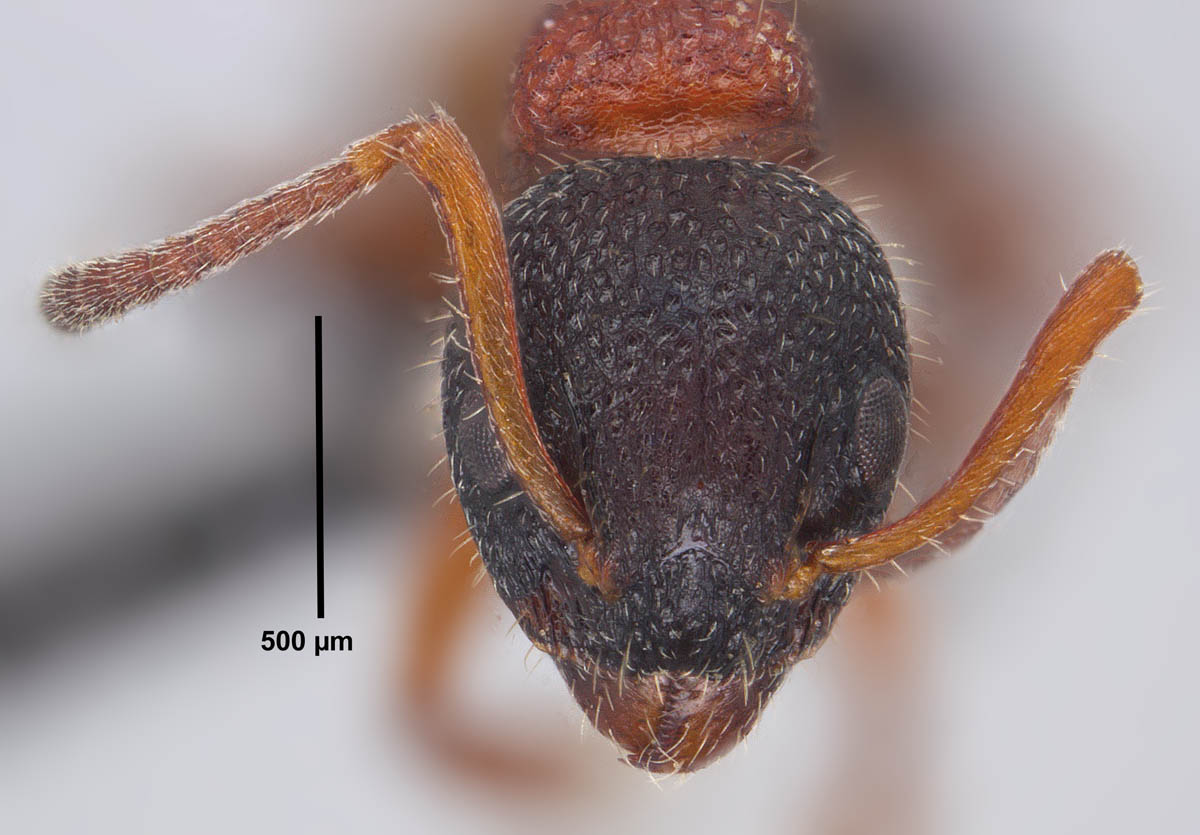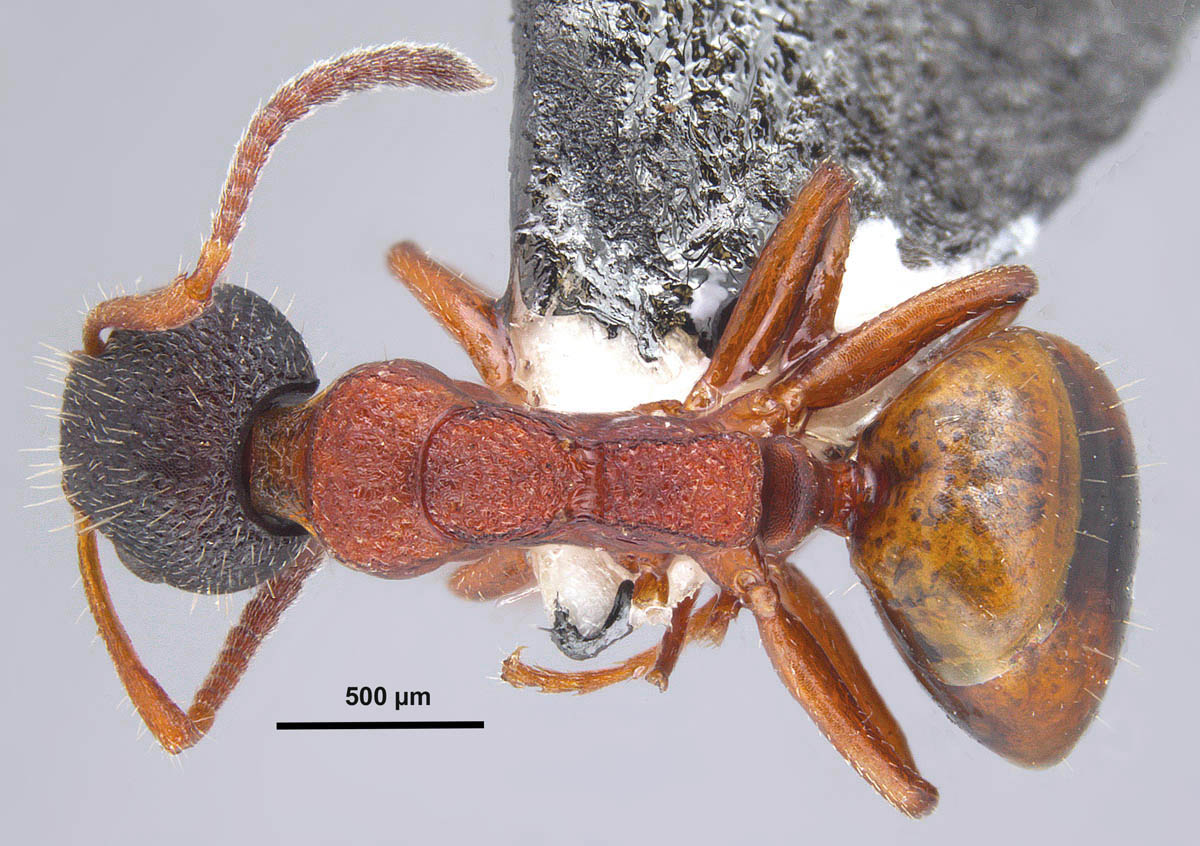Subfamily DOLICHODERINAE By Joe A. MacGown, Uploaded 2009, last updated 15 December 2015 |
||
Dolichoderus plagiatus, full face view of a worker from Dekalb Co., AL (Photo by James Lewis and Joe A. MacGown) |
Dolichoderus plagiatus, lateral view of a worker from DeKalb Co., AL (Photo by James Lewis and Joe A. MacGown) |
Dolichoderus plagiatus, dorsal view of a worker
Dekalb Co., AL (Photo by James Lewis and Joe A. MacGown) |
Introduction Taxonomic History (provided by Barry Bolton, 2015) Identification Biology and Economic Importance According to Creighton (1950), this species has small colonies (hundreds of workers). Nests are found in soil under detritus in forests, in hollow stems, and in curled-up leaves. They are found in a variety of habitats including open grassy areas, forests, and wet areas. Similar to other Dolichoderus species, they collect the sweet secretions produced by various homopterans and eat other insects for sustenance. Distribution Literature Cited Cole, A. C. 1940. A guide to the ants of the Great Smoky Mountains National Park Tennessee. The American Midland Naturalist 24: 1-88 Creighton, W. S. 1950. The ants of North America. Bulletin of the Museum of Comparative Zoology 104:1-585. Emery, C. 1894. Studi sulle formiche della fauna neotropica. VI-XVI. Bullettino della Società Entomologica Italiana 26:137-241. Emery, C. 1895. Beiträge zur Kenntniss der nordamerikanischen Ameisenfauna. (Schluss). Zoologische Jahrbücher. Abteilung für Systematik, Geographie und Biologie der Tiere 8:257-360. Johnson, C. 1989. Identification and nesting sites of North American species of Dolichoderus Lund (Hymenoptera: Formicidae). Insecta Mundi 3:1-9. MacKay, W. P. 1993. A review of the New World ants of the genus Dolichoderus (Hymenoptera: Formicidae). Sociobiology 22:1-148. Mayr, G. 1870b. Neue Formiciden. Verhandlungen der Kaiserlich-Königlichen Zoologisch-Botanischen Gesellschaft in Wien 20:939-996. Shattuck, S. O. 1994. Taxonomic catalog of the ant subfamilies Aneuretinae and Dolichoderinae (Hymenoptera: Formicidae). University of California Publications in Entomology 112:i-xix, 1-241. Smith, D. R. 1979. Superfamily Formicoidea. Pp. 1323-1467 in: Krombein, K. V.; Hurd, P. D.; Smith, D. R.; Burks, B. D. (eds.) 1979. Catalog of Hymenoptera in America north of Mexico. Volume 2. Apocrita (Aculeata). Washington, D.C.: Smithsonian Institution Press, pp. i-xvi, 1199-2209. Wheeler, W. M. 1905. The North American ants of the genus Dolichoderus. Bulletin of the American Museum of Natural History 21:305-319. Wheeler, G. C.; Wheeler, J. 1951. The ant larvae of the subfamily Dolichoderinae. Proceedings of the Entomological Society of Washington 53:169-210. Wheeler, G. C.; Wheeler, J. 1966. Ant larva of the subfamily Dolichoderinae: supplement. Annals of the Entomological Society of America 59:726-732.
Links |
||





